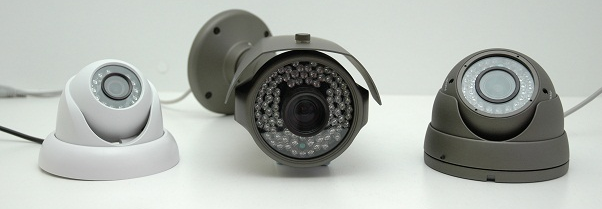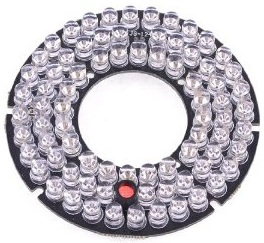
You’re ready to start shopping for security cameras. Where do you start? Security cameras are something in this world that doesn’t get enough credit for how complex and complicated they can be. As new customers to the industry, you’re probably going to realize this soon enough if you haven’t already. Some companies may be better than others at telling you what you need, but how about we talk about some basics so you can form your own opinions.
Let’s pause just for a moment. What we’d like to cover next is having realistic expectations, but that’s also going to tie in nicely to "want versus need." It’s important to see your cameras for what they are. This is going to be a security camera system. It’s meant for surveillance, safety, and protection. This is not a system intended to be used for making home movies. If your intention is to use cameras like this to make home movies, don’t expect them to perform the same way as your digital camera or camcorder. This is a perfect example of comparing apples to oranges. While you’ll consider them all to be cameras, they’re intended for very different purposes. This is where want versus needs comes in. What is your intended purpose of these cameras?
There are different kind of security cameras
Back to the basics. There are a few kinds of security cameras; standard analog, HDCVI, HDSDI, and IP/network cameras. They’re all meant to do the same thing. Standard analog cameras are your basic security cameras. They can offer a low or high resolution depending on what you want to spend and what your needs might be. While I use words like standard and basic, these cameras are more impressive than you’d initially give them credit for. The next step up are HD cameras. These are also technically analog cameras, but they’re considered high definition (HD) instead of high resolution. They’ll offer you a clearer picture for a slight increase in price. Your last option is IP/network cameras. Network cameras will offer the highest resolution available. They're appropriate for anyone looking for the best possible picture quality and clearest image.

Indoor vs Outdoor Cameras
Depending on where you plan on installing these cameras, you’ll want to select either indoor or outdoor next. Outdoor cameras should be an obvious choice for you if you know for a fact that they’re going outdoors. What can be a little trickier is indoors. In some cases, what you might view as indoors might not be as far as the camera is concerned. What indoor actually means is climate controlled. If you have control over the temperature (and it falls within the cameras tolerance) and humidity then you’re safe with indoor cameras. Places like barns or even entryways with a lot of foot traffic can experience a lot of constant and rapid temperature changes. This can enough to cause condensation to form inside the camera and potentially short it out. If there’s any hesitation, you’re better off playing it safe with an outdoor rated camera.
CCTV Security Camera Resolutions
We touched on resolution a little already but we’re going to go over it in more detail now. Standard analog cameras are measured in TV lines (TVL). Anything in the 499 or below range is considered low resolution, 500-600 being medium resolution, and 600-700 being high resolution. All perform perfectly fine regardless of high medium or low. This is another place to seriously consider want versus need. High definition cameras are offered in 1.3 and 2 megapixel resolutions. Being a high definition camera, these are considered to be a high definition resolutions. Network cameras are currently offered in 1.3, 2, 3, and 5 megapixels (MP). Again, these are all considered high definition. There’s really no way to verbalize the difference in these image qualities. Your best bet is to view sample video and decide for yourself.
Infrared Distance - "Night Vision"
Infrared distance is commonly displayed right up front for you. This is going to tell you how far the camera can see in the dark. If it doesn't feature any IR LEDs, then it’s probably safe to assume you won’t be viewing anything at night without the assistance of ambient lighting. Security cameras with infrared boards don’t require any additional light source to be able to see in complete darkness. The IR board acts as a small spotlight for the camera that will go relatively unnoticed except for a dim red glow. If your cameras are placed indoors, there’s a very high possibility that the IR distance will exceed what you actually need to see across the room. Outdoors is where you’ll need to pay a little closer attention. The best way to go about making your decision is to take a walk around the property and get an idea of where the property lines may be or which areas you’re going to want to pay special attention to. Don’t expect to find many options passed 200-300 feet. With IR illuminators, you may be able to push that a little further but that means adding on an entirely separate device.

Facial Clarity
Another camera feature usually thrown right out in front is information regarding the lens. Whether it’s a fixed or variable zoom lens, it ties into another key point; facial clarity. When you start to talk about the lens, what you probably care most about is what distances we’re talking about when it comes to facial recognition. At the end of the day, it doesn’t do you much good to catch someone in the act if they’re too far away from the camera to make out their face. Resolution ties into this so it can be hard to determine on your own. If you don’t see a specific mention of it, it’s better to ask and look for a confident answer. Make sure you don’t end up confusing infrared distance with facial clarity. One of the biggest mistakes in this department is thinking that if the seller tells you that the camera can see up to 200 feet in the dark, then that must mean it can see someone’s face that far away as well. They’re two different things and both are important to know.
Angle of View
The importance of your camera’s angle of view is often overlooked and underestimated. This is another element related to your camera lens. Like facial clarity, this is a feature of the camera you should specifically be looking for. You need to get a general idea of what you’d like to be able to see within the frame as if you’re viewing the video feed. No one’s asking you to walk around with a protractor and get exact measurements, but just a general idea of your needs here will go a long way. Knowing the camera’s angle of view will also help you determine how many cameras you’ll need to cover the entire area in question. What’s usually forgotten at this point is that the angle of view is going to change with cameras that have variable zoom. Just like looking through a pair of binoculars, the more you zoom in, the smaller the field of view becomes. Just because you see one number of 90 degrees on that spec sheet, doesn't mean that it’s always going to be 90 degrees.
Worried about glare?
Our last point to cover is something that doesn't apply to everyone. Security cameras don’t all have a built in anti-glare feature and in most cases, it’s not needed. Where it really comes in handy is for people with indoor cameras facing large windows or glass doors, although there are certainly other scenarios it comes in handy. During daylight hours, you'll quickly realize that, without this feature, you won't be able to see anything happening on the other side of the glass. It simply appears as a big bright light. The feature we're referring to is really called Wide Dynamic Range (WDR). There is also something called Digital Wide Dynamic Range (DWDR). The digital variation is a cheaper version of this anti-glare feature. While it will work to reduce some glare, it will not eliminate all of it like is guaranteed by a camera with "real/true" WDR. If you see that glare may become a problem for you based on what your cameras are facing into, this may be something to look into to avoid a future problem. Keep in mind that this feature is not intended for the purpose of being able to point your cameras into the sun. Regardless of how much you spent, and however many or what features you may have, this WILL destroy your camera eventually.
There are certainly other specifications we haven’t touched on. We of course encourage you to do your homework and learn everything you can. As we said in the beginning, these are basics, and even though they’re the basics, they’ll set you up to make a very intelligible and informed purchase.
Security Tips
For futher reading, we suggest reading the following resources to gain a better understanding about CCTV cameras.

